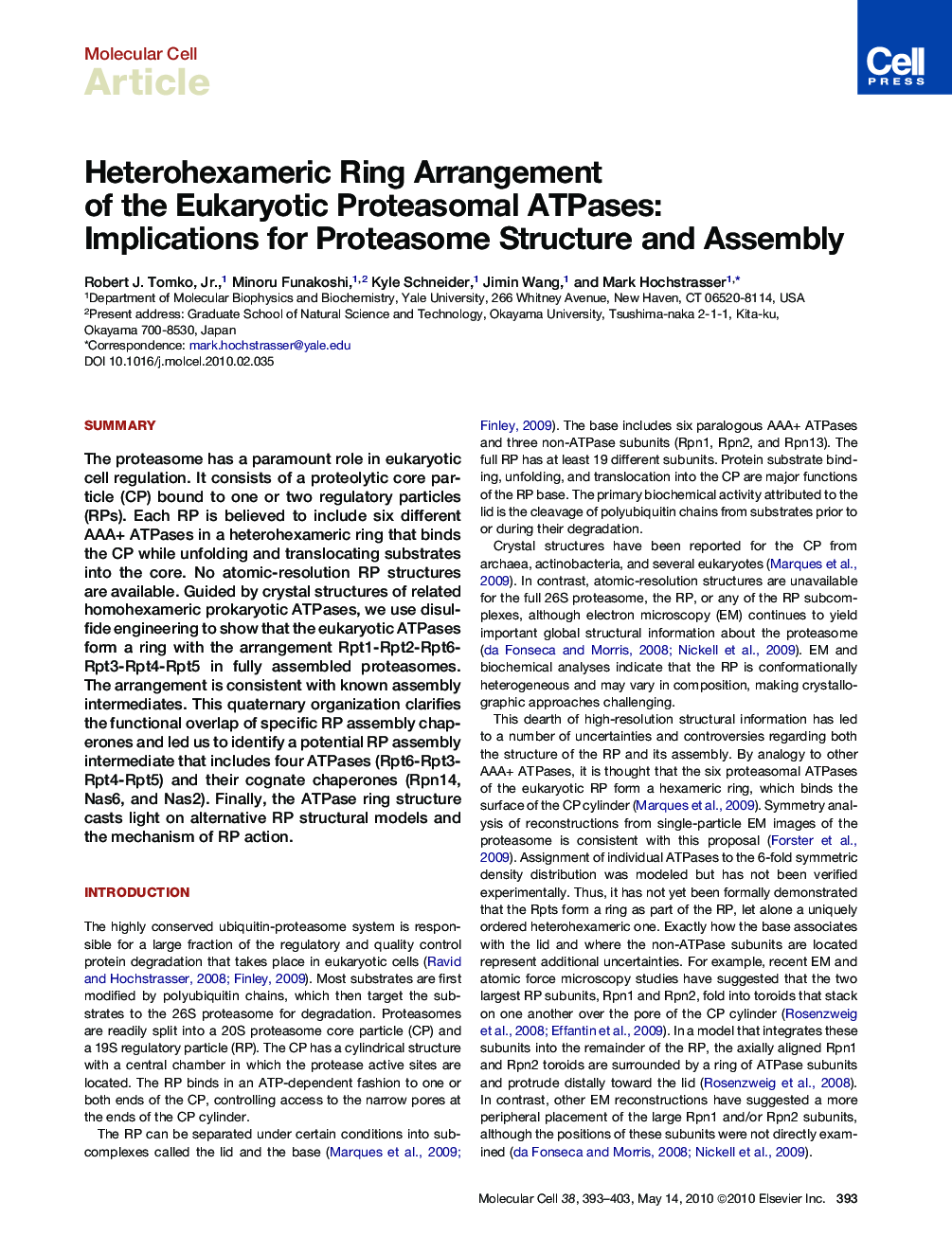| Article ID | Journal | Published Year | Pages | File Type |
|---|---|---|---|---|
| 1997179 | Molecular Cell | 2010 | 11 Pages |
SummaryThe proteasome has a paramount role in eukaryotic cell regulation. It consists of a proteolytic core particle (CP) bound to one or two regulatory particles (RPs). Each RP is believed to include six different AAA+ ATPases in a heterohexameric ring that binds the CP while unfolding and translocating substrates into the core. No atomic-resolution RP structures are available. Guided by crystal structures of related homohexameric prokaryotic ATPases, we use disulfide engineering to show that the eukaryotic ATPases form a ring with the arrangement Rpt1-Rpt2-Rpt6-Rpt3-Rpt4-Rpt5 in fully assembled proteasomes. The arrangement is consistent with known assembly intermediates. This quaternary organization clarifies the functional overlap of specific RP assembly chaperones and led us to identify a potential RP assembly intermediate that includes four ATPases (Rpt6-Rpt3-Rpt4-Rpt5) and their cognate chaperones (Rpn14, Nas6, and Nas2). Finally, the ATPase ring structure casts light on alternative RP structural models and the mechanism of RP action.
Graphical AbstractFigure optionsDownload full-size imageDownload high-quality image (159 K)Download as PowerPoint slideHighlights► Homology modeling/disulfide engineering used to map protein complex interfaces ► Unique ring arrangement of the six eukaryotic proteasomal ATPases established ► This arrangement reconciles discrepant proteasome structure and assembly data ► An intermediate with four of the six ATPases and associated chaperones found
